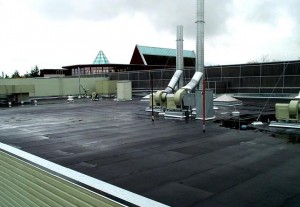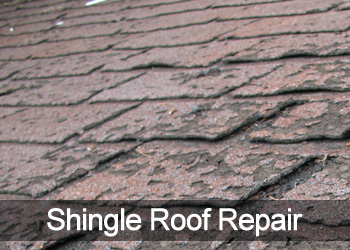Commercial properties often have unique needs when it comes to roofing. Understanding the various types of commercial roofing systems available can help property owners, building managers, and contractors make informed decisions that balance durability, cost, and aesthetics.
This guide will explore the most common types of commercial roofing systems, including:
- Built-Up Roofing (BUR)
- Single-Ply Membrane
- Modified Bitumen
- Metal Roofing
- Green Roofing
- Spray Foam Roofing
- Roof Coatings
By the end of this post, you'll have a clear understanding of each system's advantages and considerations, allowing you to choose the right roofing solution for your needs.
Continue reading →
Posted in Commercial Roofing, Flat Roofing, Roof Replacement, Vancouver Roofing category.
Comments Off
commercial roofers, commercial roofing, Commercial Roofing Company
When it's time to replace your roof, the amount of information out there can be overwhelming. This blog aims to simplify the process for you, from understanding what a roof replacement entails to selecting the right materials and roofing company. Whether you're a homeowner or a real estate investor, this guide will walk you through everything you need to know about replacing your roof efficiently and effectively.
What is a Roof Replacement?
A roof replacement involves the complete removal of your existing roof down to the deck and installing a new roof. This process is necessary when repairs are insufficient to maintain the integrity of your roof, usually due to age or significant damage.
Continue reading →
Posted in Commercial Roofing, K2 Roofing Ltd., Residential Roofing, Roof Replacement category.
Comments Off
local roofers, roof replacement, roofing company, Vancouver roofers

If you are installing a new roof on your home or commercial or industrial building, the roof is most likely covered by some kind of roofing warranty. One would think that a warranty is a warranty and there isn’t much more to consider when it comes to a roofing warranty, but that’s not actually the case. In fact, roofing warranties can be fairly complicated and it’s important as the building owner that you understand what type of warranty covers your roof, the terms of the warranty, factors that may void the warranty, and also your maintenance responsibilities. As such, it is always important to ask for some details about the roofing warranty before you sign a contract to install a new roof. So then, what can you expect from your roofing warranty?
Continue reading →
Posted in Commercial Roofing, K2 Roofing Ltd., Residential Roofing category.
Comments Off
roofers vancouver, Roofing Warranty

Roofs are arguably the most important feature of any building regardless of whether you are talking about commercial, industrial, or residential buildings. Roofs offer shelter and protection from inclement weather, but they are also one of the key structural components of a building. If you are building a home or other outdoor building and you are considering what type of roof to install, you will want to consider some of the pros and cons of pitched versus flat roofing. Pitched and flat roofing are popular choices for all types of buildings, but there are certainly advantages and disadvantages to each – let’s take a closer look.
Continue reading →
Posted in Commercial Roofing, Flat Roofing, Residential Roofing category.
Comments Off

Choosing a residential roofing company is a decision that should not be taken lightly. Roofing repairs and replacement can not only be costly, but they are crucial to protecting your home, belongings, and most importantly – your family. So, when selecting a roofing contractor, what should you consider? From the company’s reputation and experience to your preferred working style, there are many things to look for in a residential roofing company. Let’s take a look at some of the most important factors to consider.
Continue reading →
Posted in K2 Roofing Ltd., Residential Roofing category.
Comments Off
residential roofing, residential roofing company, residential roofing vancouver

Finding and hiring a commercial roofing company can be a painstaking endeavor, but one that must be completed with care and attention. Commercial and industrial roofs are complicated and integral components of any industrial or commercial building, so working with a reputable roofer is critical to ensuring your business operates effectively. Leaking roofs can lead to damage to equipment, products, and could even compromise the health and safety of your employees. An excellent commercial roofer is one with industry experience and the reputation to match. So, what should you look for in a commercial roofing company?
Continue reading →
Posted in Commercial Roofing, Roof Repair, Vancouver Roofing category.
Comments Off
commercial roofing, Commercial Roofing Company

If the time has come for you to repair or replace your residential roof, it’s also time to learn something about the most common materials used in residential roofing. Depending on your geographic region, the materials currently used in your roof, and your budget, your choice of roofing materials is going to vary. In Canada, there are several commonly utilized residential roofing materials including asphalt, clay, concrete, and metal. Let’s take a moment to describe and compare each of these materials.
Continue reading →
Posted in Residential Roofing, Roof Repair, Vancouver Roofing category.
Comments Off
residential roofing, residential roofing company, roofers vancouver

Determining the appropriate frequency of roofing inspections is not what you would call an exact science. There are a number of factors that will influence how often your roof should be inspected from the materials used in its construction to the age of the roof, not to mention the impact of weather such as wind, snow, rain, and sun. As the homeowner, you should ideally commit yourself to giving your roof a quick once over at least twice a year where you look for signs of damage, but you will also want to schedule regular professional roof inspections. Let’s take a closer look at some of the factors you should consider when determining how often your roof should be inspected.
Continue reading →
Posted in Bad Roof, Commercial Roofing, K2 Roofing Ltd., Roof Repair category.
Comments Off
roof inspection, roofers vancouver, roofing company

Commercial roofing represents a highly specialized industry wherein roofing experts utilize a variety of construction materials and methods. To believe that all commercial roofs are constructed from the same materials would be incorrect. So then, when it comes to commercial roofing practice, what are some of the most common roofing materials and how would you choose the best materials for your building? Let’s take a closer look at the most common material for commercial roofing and some of the reasons they are selected for various projects.
Continue reading →
Posted in Commercial Roofing, Flat Roofing category.
Comments Off
commercial roofers, commercial roofing, vancouver roofer
 So your roof is leaking and you are hoping that there are some easy to follow do it yourself repairs that will stop said leaking. Knowing how to repair roof shingles is helpful even for a new roof because it is not uncommon for roofs to develop leaks before the entire roof needs to be replaced. In cases such as these, a home owner with the right tools and a handyman’s intuition may well be able to repair a leak and save the cost of hiring professional roofers. Small leaks caused by localized damage such as broken or missing shingles can usually be fixed quite easily. In fact, the most difficult part of repairing roof shingles is locating the leak. One you have found the leak, single roofs tend to be the easiest to fix.
So your roof is leaking and you are hoping that there are some easy to follow do it yourself repairs that will stop said leaking. Knowing how to repair roof shingles is helpful even for a new roof because it is not uncommon for roofs to develop leaks before the entire roof needs to be replaced. In cases such as these, a home owner with the right tools and a handyman’s intuition may well be able to repair a leak and save the cost of hiring professional roofers. Small leaks caused by localized damage such as broken or missing shingles can usually be fixed quite easily. In fact, the most difficult part of repairing roof shingles is locating the leak. One you have found the leak, single roofs tend to be the easiest to fix.
Continue reading →
Posted in Bad Roof, K2 Roofing Ltd., Residential Roofing, Roof Repair category.
Comments Off
roof repair, shingle roof repairs, Vancouver roofers
« Previous Entries














